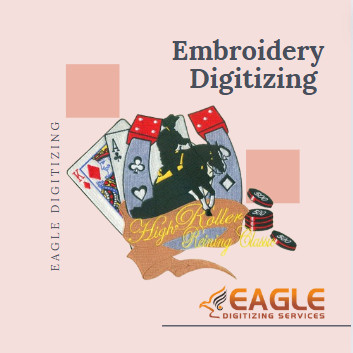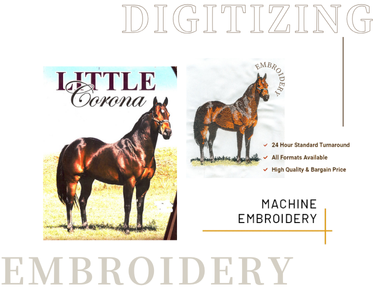Selecting the Ideal Printing Technique: Heat Transfer Vs. Silk Screening
A Creative Journey into the World of Printmaking
Silk screening, also known as screen printing,
is a versatile and time-tested method of transferring designs onto various
surfaces, from fabrics to paper, wood, and even metal. With its origins in
ancient China and its evolution into a cornerstone of modern art and business,
silk screening has maintained its appeal because of its ability to produce
vibrant, durable, and unique prints. Whether you’re an artist looking to create
custom designs, a business owner wanting to expand your product offerings, or
simply someone eager to try your hand at this creative process, silk screening
offers a hands-on, rewarding experience.
Heat Transfer Printing: Quick and Easy, But Less Durable
Heat transfer printing is known for its speed and simplicity, making it a great choice for small projects or those needing a quick turnaround. The process is straightforward, requiring minimal setup and fewer materials. However, the prints produced by heat transfer are not as durable as those from silk screening. While heat transfers are convenient for short-term or promotional items, they may fade or crack over time, especially with repeated washing or heavy wear. For designs that require longevity and a professional finish, silk screening might be the better choice.
Silk
Screening: Long-Lasting and Versatile
On
the other hand, silk screening offers durability, high-quality results, and
versatility, making it the go-to method for professional-grade prints. It is
perfect for bulk production, as the ink adheres well to a wide variety of
materials, from fabric to wood and beyond. While silk screening does require a
bit of practice and the right materials, it allows for more vibrant,
long-lasting prints that stand up to repeated use. The method’s ability to
layer ink and create complex designs also makes it suitable for artistic and commercial
endeavors.
The Pros and Cons of Silk Screening: A Balanced View
Pros: Durability and Professional
Results
Silk
screening’s greatest strength lies in its ability to produce high-quality,
durable prints. It is ideal for designs that need to last, such as t-shirts or
posters that will be worn or displayed over time. The colors tend to be
vibrant, and the design holds up well to washing or wear. Additionally, the
technique is incredibly versatile, allowing for a range of materials and
applications, from clothing and textiles to signage and fine art prints. When
executed properly, silk screening produces results that are tough to match with
other methods.
Cons: Learning Curve and
Material Costs
Despite its advantages, silk screening comes with some challenges. The
process requires precision and skill, which can take time to master. Beginners
may face difficulties with alignment, ink consistency, and screen preparation.
Additionally, the materials and equipment needed for silk screening, such as
screens, inks, and emulsion, can be costly upfront. However, once you’ve gained
proficiency, the cost per print decreases significantly, making it a more
cost-effective option for large runs of prints.
Creative
Ideas for Your First Silk Screening Project
Start Simple: Bold and Simple
Designs for Beginners
If
you’re just getting started with silk screening, it’s best to keep your designs
simple. Opt for bold, clean graphics with minimal detail to ensure a successful
first print. Start with a single color and focus on mastering the basic
technique of aligning the screen and applying the ink evenly. This approach
helps you become comfortable with the process before moving on to more
intricate projects. A simple design also minimizes the chances of mistakes,
giving you the best chance of success.
Experiment with Multiple Colors
for Depth
Once
you’ve gained confidence in handling single-colorprints, consider experimenting with layering different colors to add
depth and complexity to your designs. Silk screening allows you to apply
multiple layers of ink, with each color added one after the other. This adds a
new dimension to your prints, making them look more vibrant and engaging. By
mastering color layering, you can take your prints to a professional level,
perfect for creating custom shirts, art prints, or unique merchandise.
Advanced Techniques: Adding
Texture and Detail
For
those who are ready to push their skills further, advanced silk screening techniques
like adding texture or experimenting with different mesh sizes can make your
prints even more dynamic. By using different inks or adding elements like
glitter, metallics, or foils, you can create unique tactile effects. You might
also experiment with varying the pressure applied to the squeegee to create
different textures in the print. These methods require more practice, but they
open up a world of creative possibilities for more intricate designs.
Troubleshooting
Common Silk Screening Problems
Fixing Uneven Prints: Adjusting
Your Technique
Uneven
prints are a common issue when starting with silk screening, but they can often
be fixed by tweaking your technique. If the ink is applied inconsistently,
check the pressure of your squeegee. Applying too much or too little pressure
can lead to blotchy prints. Additionally, make sure your screen is properly
aligned with the printing surface to avoid smudging or misprints. With
practice, you’ll get a feel for how much pressure to apply and how to achieve a
consistent, smooth print.
Smudging and Ink Bleeding:
Preventative Measures
Smudging
and ink bleeding are usually the result of excessive ink or improper alignment
of the screen. To avoid these issues, use just enough ink to cover the design
and avoid overloading the screen. It’s also essential to work carefully and
avoid moving the screen before it’s completely lifted off the material. If you
notice bleeding or smudging, stop immediately and inspect the screen for excess
ink or irregularities that might be causing the issue.
Clogged Screens: Maintaining
Cleanliness
Clogging
occurs when dried ink blocks the mesh, preventing it from transferring the
design properly. To prevent clogging, be sure to clean your screen thoroughly
after every use, especially when switching between colors. If you notice the ink
is not flowing through the mesh correctly, carefully clean the affected areas
with a screen cleaner or solvent. Regular maintenance of your equipment will
ensure smoother printing and help extend the lifespan of your screens.
Silk Screening for Businesses: Turning Art into Profit
Setting Up Your Own Silk
Screening Business
Starting
a small silk screening business can be an exciting and profitable venture.
First, choose your niche—whether it's custom apparel, fine art prints, or
merchandise for local businesses. Invest in the right equipment, such as
high-quality screens, inks, and presses, and create a workspace conducive to
creativity and efficiency. As your skills improve, you’ll be able to take on
larger orders and produce high-quality prints for clients. The demand for custom
designs is growing, making silk screening a great business opportunity.
Understanding Startup Costs:
What You Need to Know
While
setting up a silk screening business requires an investment in materials and
equipment, the long-term payoff is worth it. The initial costs of acquiring
screens, presses, and inks can add up, but as you scale your business, the cost
per unit decreases. It's important to account for both the cost of equipment
and any ongoing maintenance or material expenses. With a clear business plan
and a good understanding of your costs, you can make silk screening a
profitable venture.
Marketing Your Work: Standing
Out in a Crowded Market
To
succeed in the competitive world of silk screening, effective marketing is key.
Build a strong online presence by showcasing your work on social media, setting
up an online store, and reaching out to local businesses for collaborations.
Quality is paramount, so make sure your prints are top-notch to attract repeat
customers. Offering custom designs, limited-edition prints, or unique
merchandise can also help differentiate your brand from the competition.
Fun
Facts and Myths About Silk Screening
Embracing Imperfection: The Art
of Silk Screening
One
of the most fascinating aspects of silk screening is that imperfections are
often celebrated. Unlike digital printing, where
precision is the norm, silk screening embraces the natural inconsistencies of
the process. The slight variations in ink application, texture, and color give
each print its unique character. These small imperfections can make your prints
feel more authentic and organic, something highly valued in the world of art
and design.
The Influence of Famous Artists on Pop Culture
Silk screening gained major popularity thanks to artists like Andy
Warhol, who used it to create iconic works of art that are now embedded in pop
culture. Warhol’s bold prints, such as the Campbell's Soup Can series, elevated
silk screening into the art world, demonstrating its potential for mass production
and artistic expression. His work continues to inspire artists and
entrepreneurs who embrace silk screening for its vibrant, graphic appeal.
Did You Know? Surprising Facts
About Silk Screening
Did you know that silk screening has been around for over a century
and was even used as a form of advertising in the 1920s? Companies would print
their advertisements on posters and banners using the silk screening method,
which made it possible to produce large quantities of prints quickly. Today,
the method is still widely used for both commercial and artistic purposes,
proving its lasting impact on the world of design.
Why
Silk Screening Is Still Relevant Today
Artistic Appeal: Why Artists and
Designers Still Choose Silk Screening
Silk
screening remains a popular choice for artists and designers due to its
hands-on, creative nature. The technique allows for an unmatched level of
control over the final product, ensuring that each print reflects the artist's
vision. The method is versatile, making it ideal for a range of projects from
custom clothing to fine art prints. In a world full of digital prints, silk
screening provides a tactile, personal touch that sets it apart.
Continually Evolving:
Experimenting with New Techniques
Silk
screening isn’t a static art form—it’s continually evolving. Artists and
businesses are constantly experimenting with new inks, materials, and
techniques to push the boundaries of what’s possible. Whether it’s
incorporating textures, using eco-friendly inks, or printing on unconventional
surfaces, there’s always something new to explore. If you’re passionate about
design and printing, there’s no limit to the creative possibilities that silk
screening offers.
Unlocking Your Creative
Potential with Silk Screening
Ultimately, silk screening is more than just a printing technique—it’s a creative journey that allows you to express your ideas in a tangible, lasting way. Whether you're starting a business, creating art, or simply experimenting with designs, silk screening provides the tools and techniques to unlock your full creative potential. The possibilities are endless, and with each print, you’ll gain new skills and discover new ways to push the boundaries of your craft.
.png)


